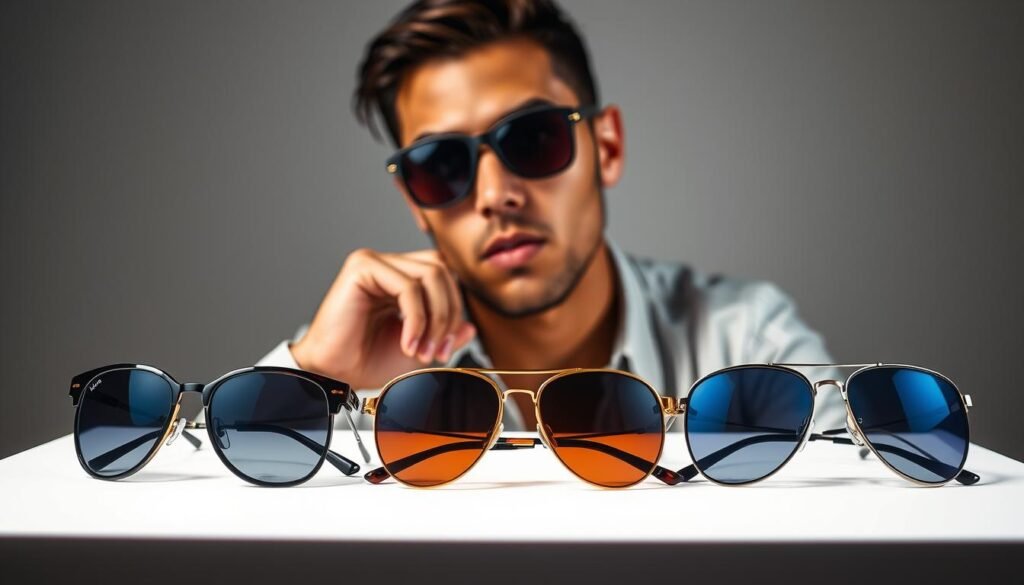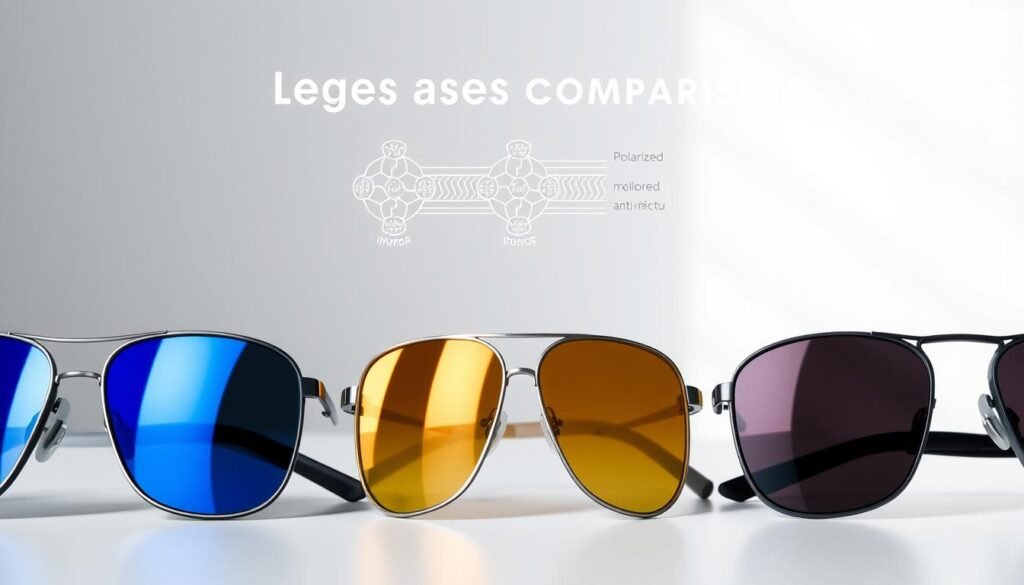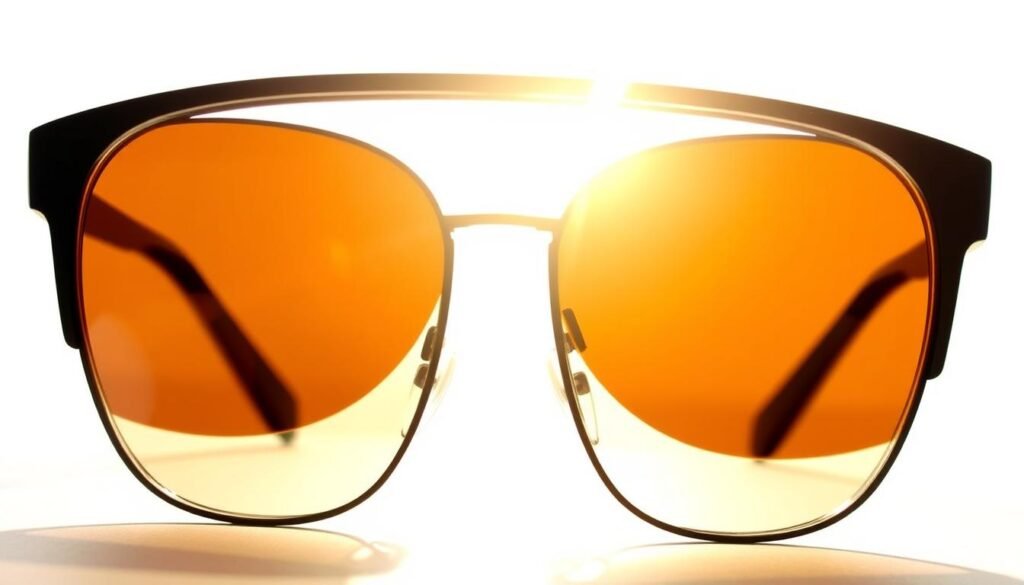Sunlight does more than brighten your day—it carries invisible ultraviolet (UV) rays that can harm your eyes over time. While most people associate UV risks with skin, your vision deserves equal attention. UVA and UVB rays penetrate clouds and bounce off surfaces like water or snow, meaning eye protection matters year-round, not just on sunny beach days.
UVA rays reach deep into the eye, potentially damaging the macula—the area responsible for sharp central vision. UVB rays primarily affect the lens, which helps focus light. The World Health Organization links 20% of cataracts to UV exposure, a preventable condition with proper safeguards. Children face higher risks since their eyes absorb more UV due to developing natural filters.
Choosing effective eyewear isn’t about style alone. Look for options that block 100% of UVA/UVB rays and consider wraparound designs to limit side exposure. Remember: UV damage accumulates silently, so consistent protection today helps preserve your sight tomorrow.
Key Takeaways
- UV radiation harms eyes even through clouds or reflections
- UVA targets the macula, while UVB affects the lens
- 20% of cataracts relate to UV exposure (WHO data)
- Children need extra protection due to developing eyes
- Prioritize 100% UV-blocking lenses and full coverage
- Damage builds over time—start protection early
Understanding UV Radiation and Its Impact on Eye Health
Those bright summer days bring more than warmth—they deliver invisible energy that can silently harm your vision over time. Ultraviolet (UV) radiation consists of three types, but only UVA and UVB reach Earth’s surface. Let’s break down how these harmful rays affect your eyes differently.
Types of UV Rays and Their Effects
UVA rays penetrate deep into the eye, targeting the macula. This part of the retina handles detailed tasks like reading. UVB rays focus on the lens, which helps focus light. Over time, this damage can cloud vision or distort colors.
| UV Type | Target Area | Long-Term Risk |
|---|---|---|
| UVA | Macula | Macular degeneration |
| UVB | Lens | Cataracts |
| UVC | N/A | Blocked by atmosphere |
Risk Factors for Cataracts and Macular Degeneration
Children face higher risk because their eyes absorb 70% more UV than adults’. The World Health Organization links 1 in 5 cataract cases to sun exposure. Even brief periods without protection add up—like spare change in a jar.
Photokeratitis (eye sunburn) causes temporary pain but signals deeper issues. Those who ski or surf need extra care since snow and water reflect 80% more UV rays. Remember: damage today could mean blurred vision tomorrow.
Key Features of the Healthiest Sunglasses
Your eyes deserve more than style—they need defense against invisible threats. Three critical elements separate basic shades from vision-preserving gear: UV-blocking power, glare management, and smart design choices.
Decoding UV400 and Complete Coverage
Always check labels for “100% UVA/UVB protection” or UV400 certification. This means lenses block rays up to 400 nanometers—the full spectrum of harmful solar energy. Beware of vague terms like “UV absorbing” that lack measurable standards.
Why Polarized Lenses Shine
While polarization doesn’t boost UV defense, it slices through blinding reflections. Water sports enthusiasts and drivers benefit most.
“Glare reduction can improve reaction times by 20% in bright conditions,”
notes a recent optometry study.
Materials That Work Smarter
Polycarbonate leads the pack with built-in UV resistance and shatterproof durability. Compare popular options:
| Material | UV Protection | Best For |
|---|---|---|
| Polycarbonate | Natural 100% | Sports, kids’ frames |
| Glass | Requires coating | Optical clarity |
| Acrylic | Needs treatment | Budget-friendly |
Wraparound frames block 98% of side-angle rays compared to 60% in standard designs. Remember: lens darkness affects comfort, not protection. Amber or gray tints work well for most activities without compromising safety.
Tips for Selecting the Best Sunglasses for Your Lifestyle
Finding eyewear that works with your daily routine requires more than liking how they look. Let’s explore how to match your lifestyle needs with technical features that keep your eyes safe and comfortable.

Fit First, Style Second
A proper fit prevents slipping during activities while avoiding pressure points. Test frames by nodding—if they slide, try adjustable nose pads or rubber grips. Wraparound styles block 98% of side-angle rays compared to standard designs.
Active individuals should prioritize polycarbonate lenses. These shatter-resistant options meet FDA impact standards for sports safety. Beachgoers benefit from polarized lenses that cut water glare, while drivers might choose amber tints for better contrast.
Decoding Labels & Expert Advice
Look for “UV400” or “100% UV protection” labels—vague terms like “sun-blocking” lack certification. Eye care professionals can recommend coverage adjustments for prescription wearers or those with light sensitivity.
Consider owning multiple pairs: mirrored lenses for snow days, lightweight options for hiking, and classic frames for urban errands. As one optometrist notes:
“Your eyewear should adapt to your day, not limit it.”
Remember: quality protection doesn’t sacrifice comfort. Flexible temples and featherlight materials make long wear effortless. Whether biking or browsing, the right pair becomes your invisible shield against cumulative damage.
How to Evaluate Additional Lens Coatings and Technologies
Modern eyewear hides smart upgrades that boost both performance and comfort. While UV defense remains essential, advanced treatments tackle glare, durability, and visual clarity. Let’s explore how these innovations work with your daily needs.

Beyond the Basics: Coating Innovations
Anti-reflective coatings cut distracting glare from screens or water surfaces. They work like invisible shields—letting more light through while reducing eye strain. Mirror finishes take this further, bouncing away intense rays during snow sports or beach days.
Scratch-resistant treatments matter more than you might think. A single deep scratch can distort light paths, weakening UV defense over time. As one optician warns:
“Damaged lenses act like broken windows—they let trouble sneak in.”
| Lens Color | Best For | Key Benefit |
|---|---|---|
| Gray | Daily use | True color accuracy |
| Brown/Amber | Driving | Enhanced depth perception |
| Green | Bright light | Reduced eye fatigue |
| Blue-Blocking | Snow/fog | Glare reduction |
| Photochromic | Variable light | Auto-adjusting darkness |
Photochromic options shine for those who move between indoors and outdoors. These light-sensitive lenses darken within seconds under UV exposure. Blue-blocking tints excel in winter sports, where snow reflects 80% more glare than grass.
When testing coatings, rub lenses gently with a microfiber cloth. Quality treatments withstand friction without smudging. Remember: layered technologies work best—combining UV defense, glare control, and impact resistance for complete protection.
Conclusion
Your daily habits shape your vision’s future. Choosing eyewear that blends style with science helps protect eyes from silent threats. Every pair should act like sunscreen for your sight—blocking harmful rays while fitting seamlessly into your routine.
Look for designs that sunglasses offer full coverage and certified UV filters. Wraparound frames and polycarbonate lenses work best for active lifestyles. Remember: even cloudy days deliver 80% of the sun’s damaging energy to your eyes.
Regular eye exams catch early signs of degeneration caused by UV impact. Pair quality eye protection with wide-brimmed hats for extra defense. Kids’ developing vision needs special attention—opt for durable, lightweight options they’ll actually wear.
Your eyes sun defense shouldn’t end with summer. Snowy landscapes and urban glare demand year-round vigilance. Visit an eye care professional to match lens tints and coatings to your environment. With smart choices today, you’ll keep seeing life’s vibrant details for decades to come.

